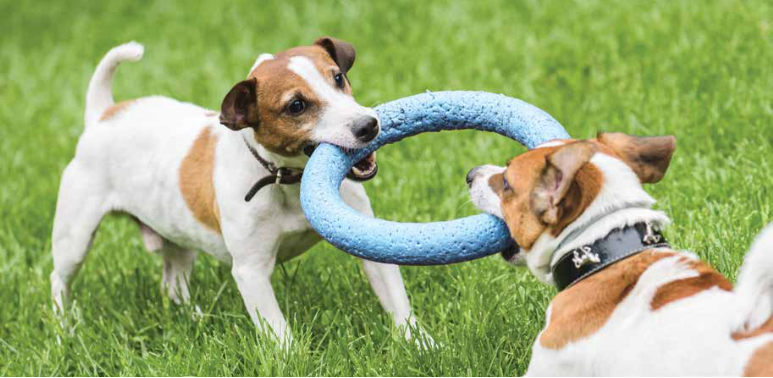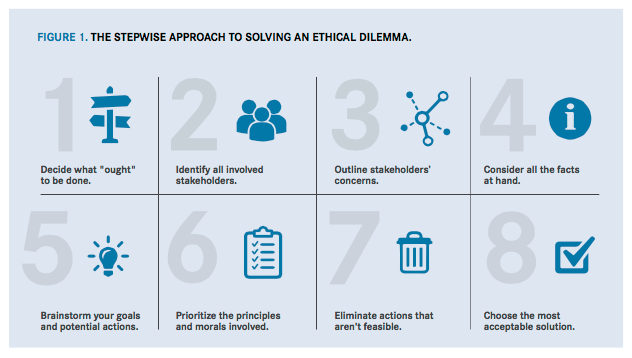Tug of War: Ethical Decision-Making in Veterinary Medicine
Ethical quandaries in practice are best solved with a stepwise approach that considers all angles of the situation, all stakeholders, and all applicable laws.

We often hear stories in the news about ethical decisions, usually because someone’s ethics have been found wanting. Although some people either intentionally make unethical choices and/or don’t spend enough time determining the appropriate behaviors, even the most ethical people can sometimes struggle with deciding what actions are most appropriate when facing an ethical dilemma.
To add to the mix, few industries in the professional arena have as many ethical and legal obligations to as many parties as those in the veterinary field. Veterinary professionals must consider a number of factors when making decisions:
• Wishes of their clients
• Obligations to:
» Animals
» The public
» Professional colleagues
Ethical practices are fairly easy to uphold in situations where everyone's interests mesh. It’s when interests and obligations conflict that ethical dilemmas arise. Consider a scenario in which a client doesn’t authorize a treatment that you know is in the best interest of his or her pet. What do you do?
When a moral dilemma arises, it’s important to ensure that you are thoroughly familiar with the American Veterinary Medical Association (AVMA) Principles of Veterinary Medical Ethics and then apply those ethics to the situation at hand. Note that collective ethical rules have, at times, been given the force of law when adopted by veterinary medical boards.
You must also consider state laws. All 50 states have statutory framework focused on veterinary practices, creating licensing procedures, and establishing basic governance of veterinary medicine. State boards of examiners enforce and administer the laws under the state’s practice act and include these codes of professional conduct. State laws that are not specific to veterinary practice, such as malpractice laws, also need to be considered. Local laws must be recognized as well.
Although laws and professional codes are crucial to consider when making ethical decisions, these decisions often go beyond codification. They also include a person’s moral convictions, which aren’t—assuming laws and codes are met—enforceable from an outside body.
Decision-Making Analysis
Although no 2 ethical dilemmas are exactly the same, we recommend the following eight-step approach to solving ethical problems (Figure 1).
1. Clearly define the core ethical question, typically framed using what “should” or “ought” to be done.
2. Determine who is affected by this issue. Who are the major stakeholders? Minor ones?
3. Consider each of the major stakeholders. What are their primary interests and/or concerns?
4. Examine the facts in hand. What else do you need to know? How can you get this information?
5. Brainstorm! What are your goals? What potential solutions or alternative courses of action are available?
6. Now it’s time for moral discernment. Which moral values, principles, or rules are relevant? How would you prioritize them?
7. Go back to the brainstorming list and eliminate alternatives that aren’t feasible. How would you assess each of the solutions that remain when evaluated using the values you prioritized? Which solution is most acceptable when viewed through the lens of your priorities? Which one satisfies the greatest number of stakeholder interests? The solution that is doable, respects the broadest array of priority values, and satisfies the greatest number of major stakeholder interests is the most ethical choice.
8. Finally, it’s time for moral closure. Review your process. Have your goals been accomplished by your proposed solution? Are they compromised in any way? Have all parties’ views been represented, whether they were actively participating in the decision making or not? Can this alternative truly be implemented as proposed?
Here are two ethical dilemmas that any veterinary practice could face. Think about what you would do in each situation.
Ethical Scenario #1: Custody Dispute
When a couple is divorcing, plenty of complicated issues can arise. These issues can affect your practice, especially if one spouse requests an irreversible procedure, such as euthanasia, spay/neuter, cosmetic surgery (ear cropping, tail docking, declaw), or relinquishing the pet for adoption, and the other spouse disagrees. Furthermore, courts are increasingly considering animals to be subject to custody laws, rather than as personal property, which makes this an even more pressing issue.
Consider this worst-case scenario. Longtime client Mrs. Jones is the documented owner of Olli, a 10-year-old male toy poodle. There is no mention of a Mr. Jones. One day, Mr. Jones brings Olli in for euthanasia because the dog is urinating on the carpet and barking too much. To complicate matters, a relief veterinarian is on duty; this veterinarian presents alternative options, but Mr. Jones cannot be swayed and he signs the consent form.
People in the practice know that this couple is in the middle of a heated divorce, but the relief veterinarian does not, and he euthanizes Olli as requested. Mrs. Jones subsequently files a lawsuit against the practice, saying that Mr. Jones took this action to spite his wife.
Using the decision-making model described earlier, what alternate solutions would you have presented? What actions would have been reasonable from an ethics standpoint? What safeguard procedures would you implement?
Ethical Scenario #2: Human Medicine
It isn’t unusual for a frightened cat to lash out and, even when safe handling procedures are followed, bite someone. How much treatment can a veterinary practice employee offer, given that veterinarians are not permitted to practice human medicine? Clearly, someone can assist the person with washing the wounds thoroughly and applying bandages because these are procedures that any “reasonably competent” individual can undertake are not considered medical practice. And, as many veterinary practices have staff members certified in standard first aid, this is clearly within scope.
But what about applying an antibiotic, such as cephalexin? It’s easy enough to apply and readily available, and it saves time for the person who was bitten. To balance clinic inventory, a prescription could be written for that person’s animal. If all heals well and no one says anything, these actions are unlikely to cause problems for anyone. Nevertheless, however well intended, multiple professional ethical tenets have been violated, including practicing medicine on a human and writing a false prescription.
Run this scenario through the decision-making analysis. What conclusions do you reach? Then throw in this added twist: What if the bite occurs during a raging blizzard and the wound looks fairly serious? Does this affect your decision?

Conclusion
Ethical quandaries are inevitable in veterinary practice. It’s how you handle them that matters. Taking into consideration the needs and desires of all stakeholders as well as all applicable laws, ensuring that every angle of the situation has been considered, and taking a stepwise approach to determine the appropriate actions to take will aid in making the most ethical decision.
VBA provides a full range of legal, practice management, and human resource services tailored for veterinarians and veterinary practices of all types. For more information, visit veterinarybusinessadvisors.com.
Newsletter
From exam room tips to practice management insights, get trusted veterinary news delivered straight to your inbox—subscribe to dvm360.
